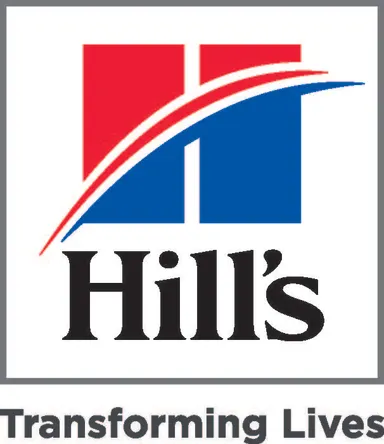Clinical Suite: A Team-Based Approach to Managing Cachexia in Cancer Patients

Sponsored by Hill's Pet Nutrition
What Is Cachexia?
Cachexia is a specific form of weight loss observed in human and veterinary patients. Although the diagnostic criteria for cachexia are subject to debate, it has been defined as “the loss of lean body mass that affects a large proportion of dogs and cats with congestive heart failure, chronic kidney disease, cancer, and a variety of other chronic diseases.”1 The presence of inflammation contributing to weight loss is a prominent feature in cachexia and considered by some to be an important diagnostic criterion.2
Cachexia differs from conventional weight loss in several ways. Firstly, cachexia can occur even in the face of adequate caloric intake.3 In addition, although weight loss in a healthy animal tends to primarily involve fat loss, cachexia involves the preferential loss of skeletal muscle.1 Finally, cachexia is associated with abnormalities in the metabolism of carbohydrates, fat, and protein, contributing to increased caloric requirements, decreased fat utilization, and increased loss of lean body mass.1-5
Cancer is a common cause of cachexia in veterinary patients. According to a 2004 study of patients treated by a veterinary oncology service, 37% of dogs had lost 5% to 10% of their body weight at the time of diagnosis and 23% of dogs had lost ≥10% of their body weight at the time of diagnosis as compared with previous weigh-ins.6
Why Is Cachexia Important?
Cachexia can have a number of harmful impacts on veterinary patients, including decreased wound healing and immune function.1 Cachexia is also associated with anemia,1 which may have a variety of impacts on the body and overall feelings of well-being.
A loss of skeletal muscle mass, a key component of cachexia, is associated with a loss of strength,affecting a patient’s daily activities and quality of life.1 Decreased quality of life in patients with cachexia may be associated with an increased risk for euthanasia.1 However, evidence suggests that weight maintenance during periods of chronic inflammation is positively associated with surivival.2
How Is Cachexia Diagnosed?
In the early stages of cachexia, patients are typically asymptomatic.3 An observant owner may notice subtle weight loss despite the presence of a good appetite. However, in many cases, subtle changes in body weight will go unnoticed. As a patient’s cachexia progresses, however, additional clinical signs (eg, muscle wasting, anorexia, lethargy, depression, nausea, vomiting) may be observed.2-3 Laboratory tests, performed in response to illness or as a component of routine monitoring, may also reveal hypoalbuminemia, anemia, decreased hemoglobin, and evidence of organ failure.1-3
How Is Cachexia Treated?
Antiemetics may be administered to control nausea, with the goal of improving the patient’s appetite and encouraging or allowing an improved caloric intake.3 Stem cell therapy, ghrelin and ghrelin mimetics, magnesium, and vitamins C, D, and E may also provide support for cachectic patients, but more studies are needed to support their efficacy.2
Increased exercise can have multiple benefits for patients with cachexia. Studies conducted in mice with mammary cancer revealed that increased exercise not only counteracts muscle weakness but can also improve muscle function, muscular antioxidant profiles, and patient quality of life.7
Dietary therapy is a mainstay of cachexia treatment; increased caloric intake is needed to fuel the patient’s increased metabolism. The 2016 AAHA Oncology Guidelines underscore the need for careful dietary management in canine and feline cancer patients, stating, “The nutritional status of all oncology patients should be routinely assessed beginning at diagnosis and throughout treatment.”8
It is essential to feed a palatable diet containing high quantities of bioavailable nutrients.3 The 2016 AAHA Guidelines state, “The most important dietary consideration for canine and feline oncology patients is that the ration is palatable and eaten; otherwise, it has no benefit.”8 In addition, frequent, energy-dense meals are often more effective than larger less-frequent meals.3 Enteral feeding is preferred, when possible, to promote GI health.3
Specific nutrients to consider in the dietary management of cachexia include fish oil and L-carnitine. Fish oil has been studied as a means of addressing cachexia through both anabolic and anti-inflammatory effects.2 L-carnitine is often deficient in human patients with cancer, and L-carnitine supplementation in these patients may help reduce fatigue.9 L-carnitine supplementation in veterinary patients may help avoid muscle breakdown for energy.10,11
It is critical all of this information regarding the nutritional management of cachexia be delivered to owners of cachectic cancer patients. Clients want to hear dietary recommendations from their veterinarian, especially when confronting cancer or another serious medical diagnosis.12 In one cross-sectional study of 75 dog presented to a veterinary oncologist, 85% of owners indicated that they value their veterinarian’s advice on how to modify their pet’s diet after a cancer diagnosis.12
Hills ONC Care Canine & Feline has been specifically formulated to support pets with cancer. Although this food is primarily designed for use in patients with neoplasia, it also offers benefits to patients with cachexia due to other causes, such as anorexia, debility, malnutrition, convalescence, and hypermetabolic states, as well as pre- and postsurgical patients requiring additional nutritional support.10,11
Hills ONC Care Canine & Feline contains a unique nutrient profile designed to stimulate appetite and a high caloric density to meet a patient’s nutritional needs. This food contains highly digestible proteins, fats, and carbohydrates, including 180% of the AAFCO recommended minimum levels of essential amino acids to aid in building muscle.10,11 Additional supplements included in this diet include L-carnitine, which promotes the use of fat for energy production, sparing muscle and reducing muscle breakdown; omega-3 fatty acids, derived from fish oil, to combat inflammation; and an ActivBiome+ blend of prebiotics to support healthy GI bacteria and promote consistent stool quality. 10,11 These ingredients are formulated in a soft kibble, which is highly palatable and easy to chew.
Talking to Clients About Cachexia: A Team-Based Approach
Every team member plays a role in making sure cancer patients receive the best care possible. From receptionists answering worried phone calls to the veterinarian having quality-of-life conversations, having team members who feel confident with client communication is a key factor in providing excellent patient care. Focusing on the following roles can help lead to team success:
Receptionist
Provide support and empathy for clients who are coping with their pet having cancer.
Understand that cancer can result in unwanted weight loss and owners of these patients may have questions about feeding their pet. Simply feeding more is typically not adequate to address this condition.
When scheduling appointments, ask clients about their pet’s appetite and observed weight changes, understanding that weight changes warrant an appointment with the veterinary team.
Encourage clients to work with their veterinary team to develop an appropriate nutritional plan for their pet.
Schedule regular follow-up visits for pets with cancer and other chronic diseases.
Encourage clients to contact the clinic if they have concerns about their pet’s weight or appetite.
Discuss financial solutions that may aid clients in providing for their pet’s care.
Ensure that clients are sent home with relevant handouts, nutritional plans, and other information to support their pet’s care.
Veterinary Technician or Assistant
Understand that unintended weight loss is an important concern in any patient.
Obtain an accurate patient weight at every visit.
Compare the patient’s current weight to previous weights in the medical record, allowing for early detection of weight loss trends.
Collect a thorough dietary history at every visit, especially in pets with cancer and other chronic diseases. Determine what the pet eats, how much they eat, how frequently they eat, and whether any changes in appetite have been observed.
Relay any client concerns related to the patient’s appetite or nutrition to the veterinarian.
Be empathetic and understanding as you address client concerns related to cancer and cachexia.
Emphasize the need for a veterinarian-developed nutrition plan in pets with cancer and other chronic diseases.
Send relevant handouts, nutritional plans, and other information home with the client to support patient care.
Veterinarian
When a pet is diagnosed with neoplasia or other chronic disease, prepare owners for the possibility of cachexia. Educated owners are more likely to recognize cachexia in its early stages.
Record BCS, MCS, and weight in the patient’s medical record at every visit. Cancer and other causes of cachexia should be on the differential list for any patient with unintended weight loss or changes in BCS/MCS.
Review patient trends in weight, BCS, and MCS at every visit, especially in patients with known or suspected neoplasia. In some cases, a change in BCS or MCS may be detectable before a measurable weight loss occurs, especially in the case of ascites and other conditions that contribute to weight gain.
Have a strong understanding of recommended medical, lifestyle, and dietary strategies to combat cachexia.
Create a customized treatment plan, including nutritional management, for any pet with evidence of cachexia.
Communicate with clients regularly about their pet’s diagnosis and their pet’s behaviors at home, including regular in-person follow-ups.
Provide owners with resources that they can use to perform quality-of-life assessments at home.
TEAM HANDOUT
For more team tips on how to manage cancer patients with cachexia, explore this downloadable team handout.
Conclusion
Cachexia is a common and potentially frustrating condition in patients with cancer and other chronic diseases. Early diagnosis is key and can allow for early treatment and improved outcomes. Fortunately, there are a number of tools to manage cachexia in the veterinary setting, including medical therapies, diet, and exercise.
Dietary management plays a key role in the treatment of cachexia. Hills ONC Care Canine & Feline is specifically formulated to address the unique nutritional needs of pets with cancer, providing optimal nutrition for these patients.
When addressing cachexia and other serious medical conditions, adopting a comprehensive, team-based approach is best. This can help maximize the likelihood of patients receiving the best possible care while providing clients with consistent messaging and education.
